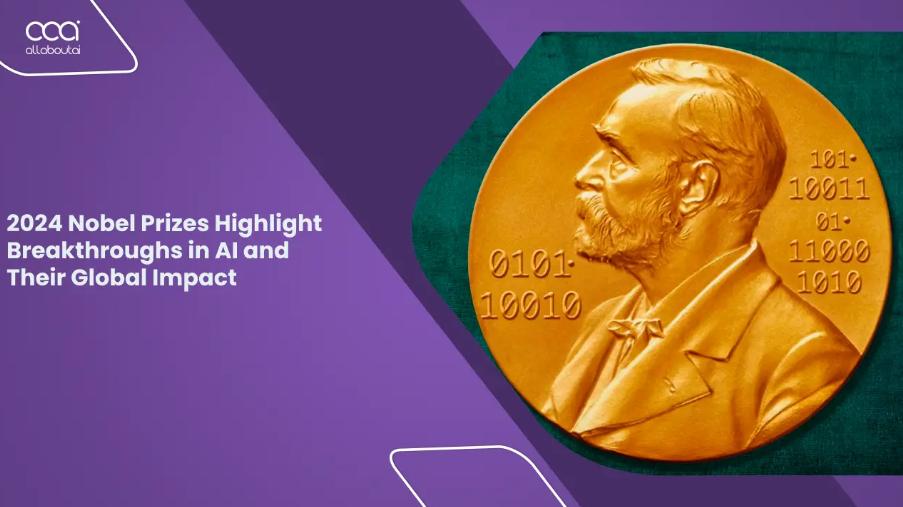
Artificial intelligence's achievements in the field of science have once again reached a high point. Recently, the Nobel Prize in Chemistry was awarded to three scientists whose research enabled artificial intelligence to accurately predict protein structures, opening a new door for drug development and materials science. At the same time, a research team from South Korea has also made breakthroughs in quantum computing, exploring molecular properties in a more efficient way, paving the way for future technological advances.
First, a milestone in artificial intelligence: inspiration from the Nobel Prize in Chemistry The 2024 Nobel Prize in Chemistry was awarded to three outstanding scientists-David Baker, professor at the University of Washington, Demis Hesabis, CEO of DeepMind, and John Jumper, chief researcher. They used artificial intelligence technology to solve the problem of protein structure prediction, allowing scientists to understand the behavior of biomolecules more quickly and accurately. This discovery will not only help develop new drugs, but may also give rise to more efficient materials, laying the foundation for future technology. This technology enables pharmaceutical companies and research institutions to design therapies for specific diseases more quickly, promoting the rapid development of medical technology.
Second, a new breakthrough in quantum computing: the research results of the Korean team. Meanwhile, Dr. Xiangta Lim's team at the Korea Institute of Science and Technology (KIST) has made revolutionary progress in quantum computing. They developed a new algorithm that can estimate molecular properties, such as bond lengths between atoms and ground-state energies, with chemical precision. Compared with traditional computing methods, the algorithm can maintain high accuracy without relying on quantum error mitigation techniques and significantly reduces the need for computing resources. This opens up a new perspective for the application of quantum computing in drug development and materials science. The core advantage of quantum computers lies in their huge computing power, but their technical bottlenecks are equally significant. Traditional quantum bits are prone to errors when processing complex calculations, especially when the scale of calculations is expanded. Dr. Lim's team used a higher-dimensional quantum unit, the qubit, which can represent multiple states, not just 0 and 1. By utilizing the orbital angular momentum state of photons, they developed a system that does not require complex quantum gate operations, significantly reducing the error rate in calculations.
Finally, the variational quantum eigenvalue method (VQE): combining the advantages of classical and quantum. One of the most promising hybrid algorithms in quantum computing is the variational quantum eigenvalue method (VQE). The method combines the advantages of quantum processing units (QPUs) and classical processing units (CPUs) to solve complex problems in a more efficient way. However, conventional VQE can only process up to 12 qubits in a qubit system and requires a lot of error mitigation techniques to achieve chemical accuracy. In contrast, the new algorithm developed by the KIST team can achieve 16-dimensional quantum computing in a photonic system, breaking through the limitations of conventional qubits for the first time. In the experiment, they successfully measured the bond length between a four-dimensional hydrogen molecule and a 16-dimensional lithium hydride molecule. This result not only demonstrates the potential of high-dimensional computing, but also shows that chemical accuracy can be achieved without complex error mitigation techniques. This breakthrough technology provides new solutions for fields such as pharmaceuticals, material research and development, and climate modeling, demonstrating the great potential of quantum computing in practical applications.
In summary, artificial intelligence and quantum computing are jointly leading a new trend in scientific development. Artificial intelligence opens the door to unknown areas for scientists by analyzing massive amounts of data and discovering hidden patterns; quantum computing provides unprecedented tools for solving extremely complex computational problems. The combination of the two will further promote scientific exploration into an era of higher efficiency and greater potential. In the future, artificial intelligence and quantum computing will not only play an important role in drug development and materials science, but may also help solve global challenges such as climate change. For example, by accurately simulating the atmosphere and climate change patterns, these technologies can help develop more effective emission reduction strategies. In addition, these technologies are also promising in areas such as finding new energy sources and optimizing supply chains.

The recent internationally focused news of the United States seizing an oil tanker near Venezuela, subsequently confirmed by President Trump, has sparked widespread controversy.
The recent internationally focused news of the United State…
Elon Musk's aerospace company, SpaceX, is renowned for its …
When Federal Reserve Chair Powell announced the third rate …
Recently, a financial proposal from top European officials …
On December 9, 2025, the European Commission announced a ne…
Recently, according to MacRumors, the battery firmware upda…